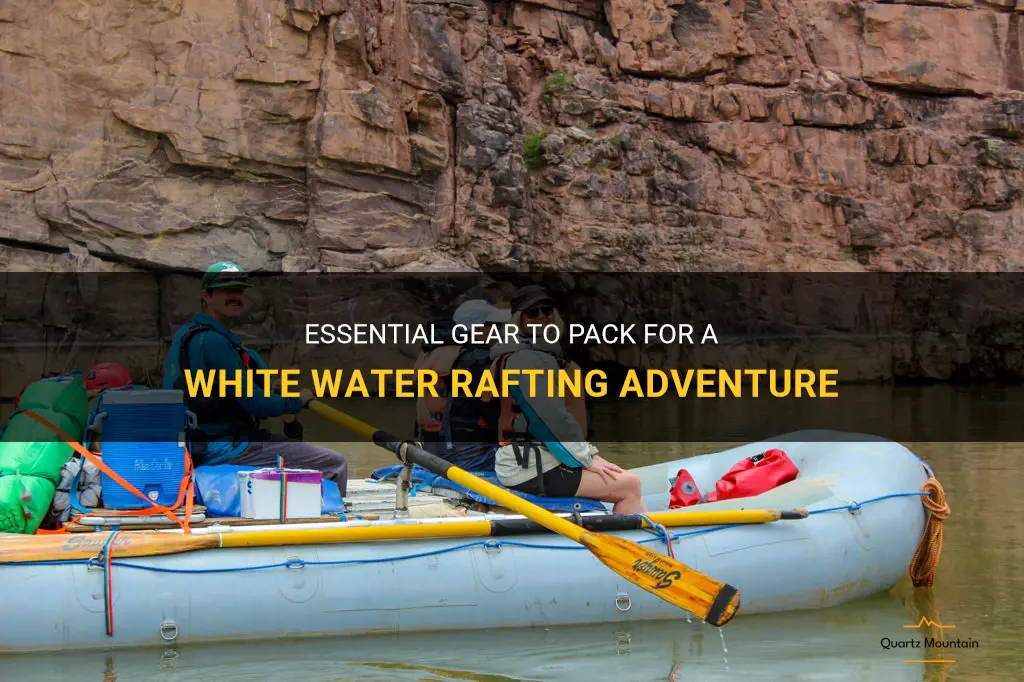
Are you an adrenaline junkie who loves to experience thrilling adventures? If so, white water rafting might be the perfect activity for you. Picture yourself paddling through powerful rapids, surrounded by stunning natural scenery and getting an adrenaline rush like no other. But before you jump into the adventure, it's important to make sure you have all the essential gear packed to ensure a safe and enjoyable experience. In this guide, we'll explore the must-have gear for a white water rafting adventure, from a reliable helmet and a sturdy life jacket to durable waterproof gear and proper footwear. So, get ready to gear up and conquer the wild rapids like a pro!
| Characteristics | Values |
|---|---|
| Appropriate clothing | Quick-drying and moisture-wicking |
| Footwear | Closed-toe water shoes or sandals |
| Personal flotation device (PFD) | Type III or Type V PFD |
| Helmet | Whitewater helmet |
| Paddle | Whitewater rafting paddle |
| Sun protection | Sunscreen, sunglasses, hat |
| Water bottle | Insulated water bottle |
| Dry bags | Waterproof bags for personal items |
| First aid kit | Basic first aid supplies |
| Snacks | Energizing and non-perishable snacks |
| Waterproof camera | Waterproof or GoPro camera |
| Extra layers | Lightweight, warm clothing |
| Change of clothes | Dry clothes for after the rafting trip |
| Towel | Quick-drying towel for drying off |
| Whistle | Emergency signaling device |
What You'll Learn
- What clothing should I pack for white water rafting?
- Do I need to bring any special gear for white water rafting?
- What type of shoes are recommended for white water rafting?
- Is there any specific safety equipment I should include in my packing list for white water rafting?
- Are there any personal items or extras that are important to pack for a white water rafting trip?

What clothing should I pack for white water rafting?
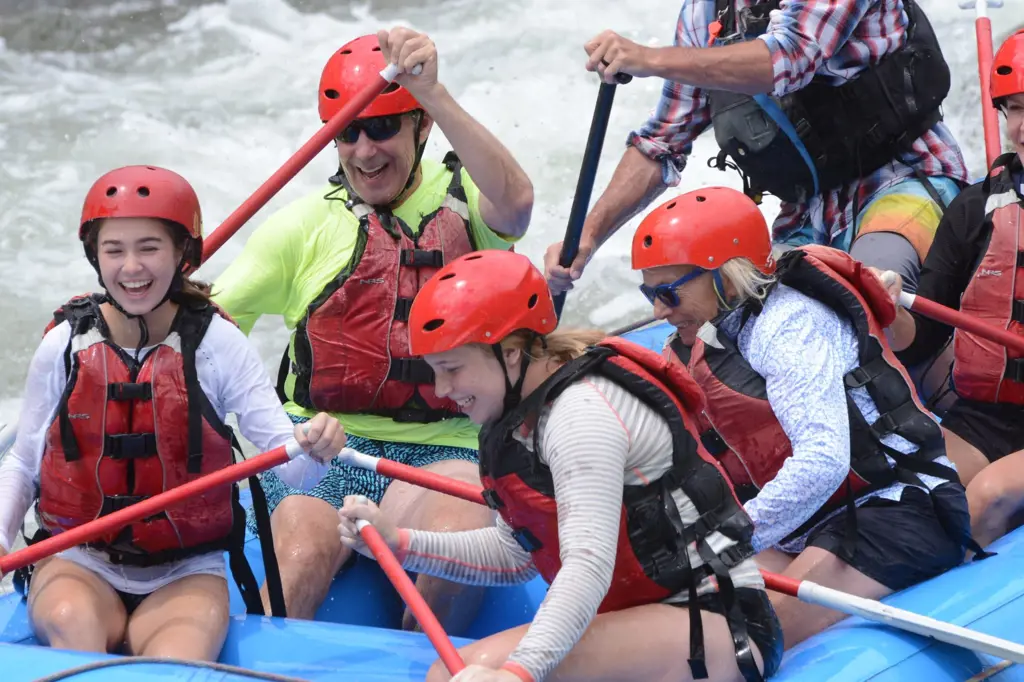
If you're planning on going white water rafting, it's important to pack the right clothing to ensure your safety and comfort. The clothing you choose should be specifically designed for water activities and be able to withstand the elements you'll encounter on the river. In this article, we'll discuss what clothing you should pack for white water rafting, including the essential items and why they are important.
- Swimwear: The first item you'll need to pack is a swimsuit or swimming trunks. Make sure your swimwear is comfortable and allows for easy movement. Avoid wearing cotton swimsuits, as they tend to absorb water and become heavy when wet. Look for swimwear made from quick-drying materials such as nylon or polyester.
- Water shoes: Since you'll be walking on slippery surfaces, it's essential to have proper footwear. Opt for water shoes or river sandals that have excellent traction and toe protection. These shoes will provide grip on wet rocks and help prevent injuries.
- Rash guard: A rash guard is a tight-fitting, lightweight shirt that offers protection against the sun, rocks, and any potential abrasions. It also helps to regulate body temperature and can prevent chafing caused by the life jacket rubbing against your skin. Look for a rash guard made from a breathable and quick-drying fabric such as nylon or spandex.
- Wetsuit: Depending on the weather conditions and the water temperature, you may need to wear a wetsuit. A wetsuit provides insulation and protection against the cold water. It traps a thin layer of water between your skin and the suit, which your body heats up, keeping you warm. Choose a wetsuit that fits snugly but allows for easy movement.
- Layers: Even if the weather is warm, it's essential to pack layers of clothing to adapt to changing conditions. Bring a lightweight, waterproof jacket or windbreaker to protect yourself from rain or wind. Additionally, pack a warm fleece or synthetic insulation layer to keep you warm during breaks or when the temperature drops.
- Hat and sunglasses: To protect your face and eyes from the sun, wear a hat with a brim to shield you from the direct sunlight. Look for a hat that has a chin strap to prevent it from blowing away in windy conditions. Don't forget to wear polarized sunglasses to reduce glare from the water surface.
- Sunscreen and lip balm: The sun's reflection off the water can cause intense UV exposure. Apply waterproof sunscreen with at least SPF 30 to all exposed skin, including your face, neck, arms, and legs. Don't forget to protect your lips with a lip balm that contains SPF.
- Personal flotation device (PFD): While not clothing, a personal flotation device, also known as a life jacket, is an essential safety item for white water rafting. Choose a PFD that fits you properly and is approved by a recognized organization. It should be comfortable, allow for a full range of movement, and have multiple adjustment points to ensure a secure fit.
Remember, when packing for white water rafting, choose clothing that is specifically designed for water activities. Avoid cotton, as it takes a long time to dry and can make you feel cold and uncomfortable. Opt for quick-drying materials that provide protection, insulation, and allow for easy movement. By packing the right clothing, you'll be able to fully enjoy your white water rafting adventure while staying safe and comfortable.
Essential Items to Pack for a Delicious Beach Lunch
You may want to see also

Do I need to bring any special gear for white water rafting?
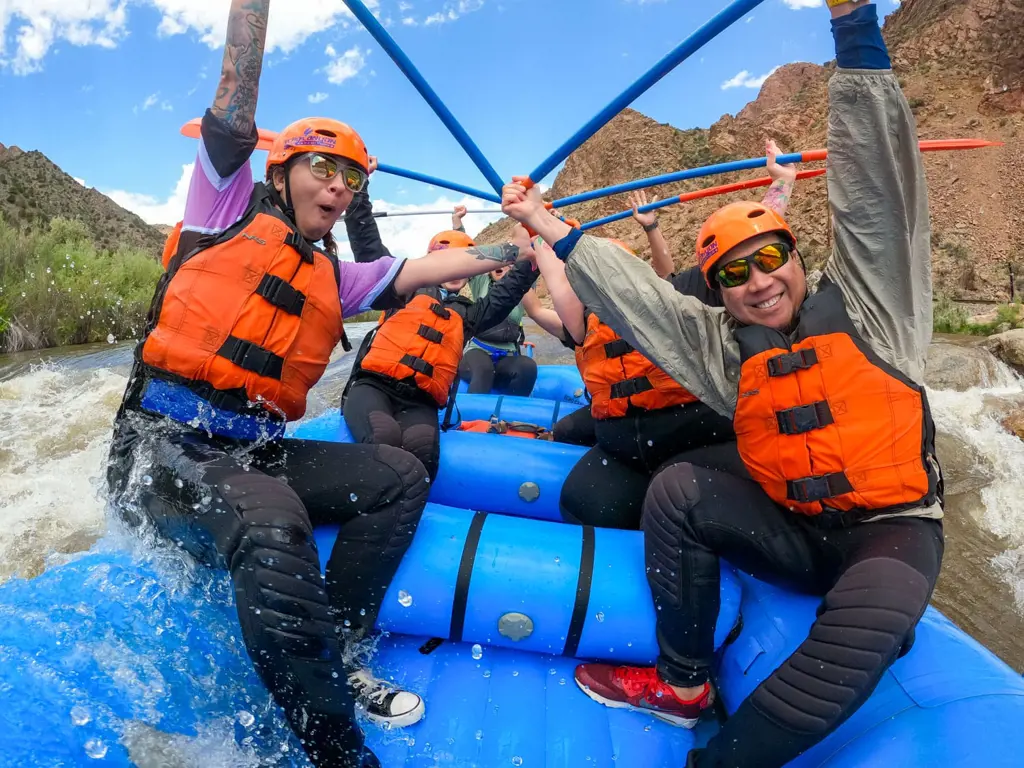
White water rafting is an thrilling and adventurous sport that involves navigating through fast-flowing, turbulent rivers. While it is full of excitement, it is essential to be prepared and equipped with the necessary gear to ensure safety and maximize enjoyment. In this article, we will discuss the special gear that you should bring for white water rafting.
Personal Flotation Device (PFD):
A PFD, also known as a life jacket, is perhaps the most crucial piece of gear for white water rafting. It is designed to keep you afloat in the water in case you fall out of the raft. Make sure your PFD is properly fitted and approved by the relevant authorities for whitewater conditions.
Helmet:
A helmet is another essential item to protect your head from potential collisions with rocks or other hazards in the river. Choose a helmet specifically designed for water sports, with adequate padding and a secure fit.
Wetsuit or Drysuit:
Depending on the water temperature, you may need to wear either a wetsuit or a drysuit. A wetsuit provides insulation and protects you from colder waters, while a drysuit ensures that you stay dry even if you fall into the water. Consult with your rafting outfitter or guide to determine the best option for the conditions you will be facing.
Paddle:
While most rafting companies will provide paddles, it is a good idea to check with them beforehand. If you are bringing your own paddle, ensure it is sturdy, lightweight, and the correct length for your height.
Footwear:
Proper footwear is essential to protect your feet and provide traction in and out of the raft. Neoprene booties or water shoes with a good grip are ideal. It is important to avoid open-toed shoes or sandals, as they can easily come off in the water or get injured.
Clothing:
Wearing quick-drying and moisture-wicking clothing is crucial for comfort during white water rafting. Avoid cotton fabrics, as they tend to get heavy when wet and can lead to hypothermia. Opt for synthetic materials such as nylon or polyester that are lightweight and dry quickly.
Dry Bag:
A dry bag is a waterproof bag that safeguards your personal belongings such as a change of clothes, snacks, sunscreen, and cameras from getting wet. It is essential to keep your valuables protected and dry during your rafting adventure.
Remember, always follow the instructions and guidelines provided by your rafting outfitter or guide. They will have specific requirements and recommendations based on the river and weather conditions you will encounter. Additionally, it is essential to listen to the safety briefing and practice any rescue techniques demonstrated prior to embarking on your white water rafting excursion.
In conclusion, white water rafting is a thrilling and challenging activity that requires special gear to ensure safety and maximize enjoyment. Bringing a properly fitted PFD, a helmet, appropriate clothing, footwear, and a dry bag are essential for a successful and safe white water rafting experience. Consult with your rafting outfitter or guide to determine the specific gear requirements for your adventure. So grab your gear, hop into the raft, and get ready for an adrenaline-pumping ride!
What Clothes to Pack for December in Vietnam
You may want to see also

What type of shoes are recommended for white water rafting?
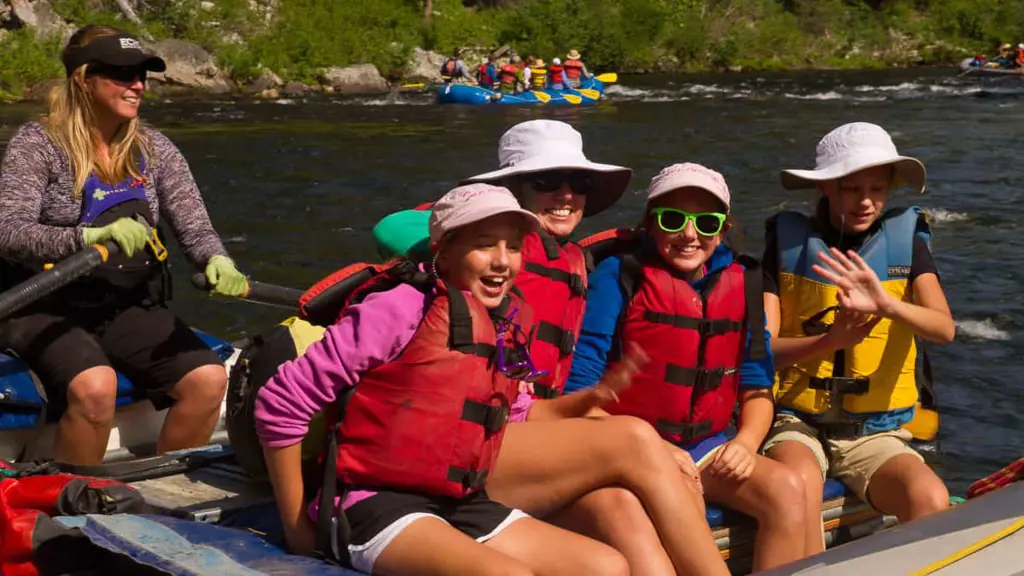
If you're planning on going white water rafting, it's essential to have the right gear for a safe and enjoyable experience. One crucial piece of gear is the right type of shoes. The type of shoes you wear can greatly impact your comfort and safety during your white water rafting adventure.
When it comes to choosing the best shoes for white water rafting, it's important to prioritize functionality over fashion. Your shoes need to provide excellent traction, stability, and protection from sharp rocks and debris. Water shoes are the most recommended type of footwear for white water rafting due to their unique design and features.
Water shoes are specifically designed for water-based activities like rafting, kayaking, and swimming. They are made from quick-drying and breathable materials such as neoprene and mesh, which allow water to flow through and drain quickly. This feature is crucial as it helps to prevent your shoes from becoming waterlogged and heavy, which could impede your movement and make it difficult to swim if needed.
Water shoes also have sturdy rubber soles that provide excellent traction on wet and slippery surfaces, ensuring that you have a firm grip on the raft or riverbed. This is especially important when navigating rapids or walking on rocky riverbanks. The rubber soles also act as a protective barrier, preventing sharp rocks or other objects from puncturing or injuring your feet.
In addition to providing protection and traction, water shoes should fit snugly to your feet to prevent blisters and provide stability. They should have a secure closure system such as laces or velcro straps to keep them in place, even during fast-paced rafting. Avoid shoes that have loose or open designs as these can easily slip off or let debris enter.
It's also worth considering the type of socks you wear with your water shoes. Neoprene socks are a popular choice as they provide additional insulation, warmth, and cushioning. They also help to prevent blisters and chafing caused by rubbing against the shoes.
To find the perfect water shoes for white water rafting, consider trying them on and walking in them before your trip. Make sure they fit comfortably and securely on your feet. Test their traction by walking on wet surfaces or imitation riverbeds to ensure they provide the grip you need.
In conclusion, when it comes to white water rafting, wearing the right type of shoes is crucial for safety and comfort. Water shoes, with their quick-drying materials, sturdy soles, and secure fit, are the recommended footwear for this adventurous activity. Make sure to choose water shoes that fit well and provide excellent traction to ensure a successful and enjoyable white water rafting experience.
Essential Items to Pack for the Ever-Changing Weather in Phoenix
You may want to see also

Is there any specific safety equipment I should include in my packing list for white water rafting?
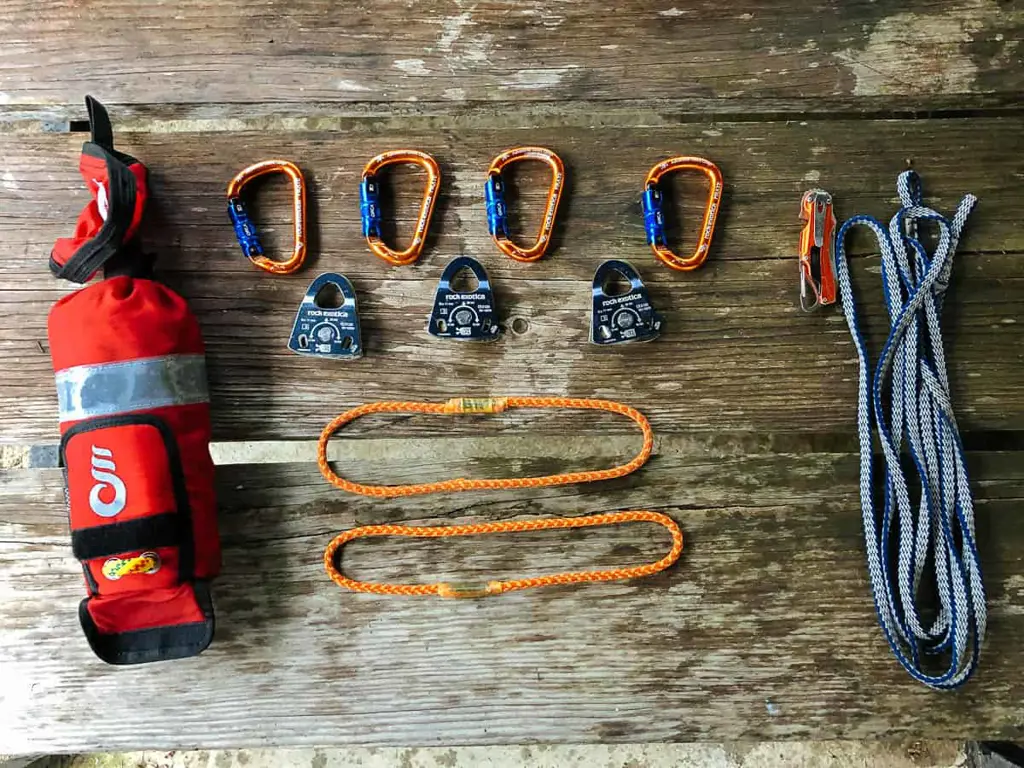
White water rafting is an exhilarating outdoor activity that involves navigating through rough waters in an inflatable raft. While it can be a thrilling experience, it is important to prioritize safety and include the necessary equipment on your packing list. The right safety equipment can make a significant difference in ensuring a safe and enjoyable white water rafting trip. Here are some specific safety equipment items that you should include in your packing list:
- Personal Floatation Device (PFD): A PFD, also known as a life jacket, is perhaps the most essential piece of safety equipment for white water rafting. It is designed to keep you afloat in case you fall into the water. Make sure to choose a PFD that is specifically designed for whitewater activities and is approved by the relevant safety authorities. It should fit comfortably and have adjustable straps to secure it properly.
- Helmet: A helmet is another crucial safety item for white water rafting, as it helps protect your head from rocks and other potential hazards. Look for a helmet that is specifically designed for water sports and has a secure chin strap to keep it in place during turbulent rapids.
- Wetsuit or Drysuit: The choice between a wetsuit or drysuit depends on the water temperature and weather conditions. In colder environments, a drysuit is recommended as it provides insulation and keeps you dry. In warmer conditions, a wetsuit can provide both insulation and protection against abrasions.
- Footwear: It is important to wear appropriate footwear that provides protection and secure footing. Choose water shoes or neoprene booties that have a good grip and can protect your feet from sharp rocks and debris. Avoid wearing flip-flops or bare feet, as they can easily get injured.
- Whistle and Knife: A whistle is an essential item to have in case of an emergency. It can be used to attract attention and signal for help. Additionally, a knife with a secure sheath can be useful for cutting ropes or other entanglements in case of an emergency.
- First Aid Kit: Having a basic first aid kit is always a good idea, as it can help treat minor injuries or provide temporary relief until further medical assistance is available. Include essentials such as band-aids, antiseptic ointment, pain relievers, and any personal medications you may need.
- Throw Bag: A throw bag is a rescue device used to throw a rope or line to someone in the water who needs assistance. This can be especially useful if someone falls out of the raft and needs to be quickly pulled back in.
- Communication Device: Depending on the location and the distance from civilization, it may be necessary to have a communication device such as a waterproof radio or a personal locator beacon (PLB) to call for help in case of emergencies.
- Sun Protection: Don't forget to pack sun protection items such as sunscreen, sunglasses, and a hat. The sun's rays can be intense on the water, and protecting your skin and eyes is important to avoid sunburn and maintain visibility.
- Dry Bag: A dry bag is essential for keeping your personal belongings and electronics dry during the rafting trip. It will protect items such as phones, cameras, and spare clothing from water damage.
Remember, this is not an exhaustive list and additional safety equipment may be required depending on the specific rafting trip and the recommendations of professional guides or outfitters. It is crucial to follow their advice and instructions to ensure a safe and enjoyable experience. Prioritize safety, pack the necessary equipment, and always be prepared for any unexpected situations that may arise during your white water rafting adventure.
Ultimate Guide to Packing for Interrailing: Tips and Essentials
You may want to see also

Are there any personal items or extras that are important to pack for a white water rafting trip?
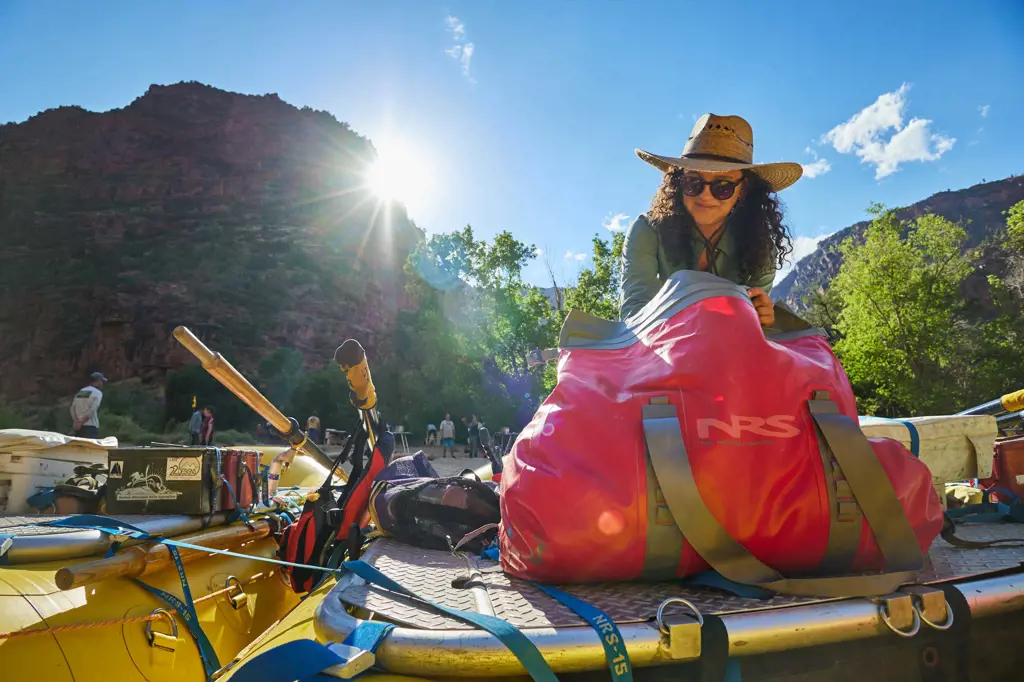
When embarking on a white water rafting trip, it is important to be prepared and pack the necessary items to ensure a safe and enjoyable adventure. While most of the equipment is typically provided by the rafting company, there are a few personal items and extras that are important to bring along.
One of the most essential items to pack for a white water rafting trip is a waterproof bag or dry box. This will allow you to keep your personal belongings such as a camera, wallet, and phone safe and dry throughout the trip. It is crucial to protect these items from getting wet, as water damage can be expensive to repair or replace.
Another important item to pack is appropriate clothing that can withstand the water and weather conditions. Dressing in layers is key, as it allows you to adjust your clothing based on the temperature. A wetsuit or splash jacket can provide added insulation and protection from the cold water, especially in cooler climates. Additionally, it is important to wear closed-toe shoes with good traction to prevent slipping on wet rocks or in the raft.
While most rafting companies provide helmets and life jackets, it is always a good idea to bring your own if you have them. This ensures a proper fit and allows you to be more comfortable and confident on the water. It is crucial to prioritize safety and wear a life jacket at all times while rafting, as it can save your life in the event of an accident.
In addition to the basic essentials, there are a few personal items and extras that can enhance your white water rafting experience. For example, bringing a waterproof camera or GoPro can allow you to capture unforgettable moments and document your adventure. Just make sure you have a secure way to attach or store the camera so it doesn't get lost or damaged during the ride.
Snacks and water are also important to pack, as rafting can be physically demanding and you'll need to stay hydrated and fueled. Energy bars, trail mix, and fruits are great options for quick and easy snacks that provide the necessary nutrients to keep you going. It is important to pack these items in a waterproof or sealed container to prevent them from getting wet.
Lastly, consider bringing a small first aid kit with basic essentials such as band-aids, antiseptic wipes, and pain relievers. While rafting is generally a safe activity, accidents can happen, and it is always good to be prepared for minor injuries.
Overall, packing the right personal items and extras can greatly enhance your white water rafting trip and ensure a safe and enjoyable experience. Prioritizing items that keep your belongings dry, provide proper clothing and safety equipment, and offer additional comforts such as a waterproof camera or snacks will contribute to a successful adventure on the water.
Essential Items to Include in Your Packing List for a Coron Tour
You may want to see also
Frequently asked questions
It is important to wear comfortable and stretchable clothing while white water rafting. Opt for quick-drying materials such as nylon or polyester. Avoid wearing jeans or heavy cotton clothing as they can become heavy when wet and may make it difficult to move around in the raft. Additionally, don't forget to wear a hat and sunscreen to protect yourself from the sun.
It is recommended to wear closed-toe shoes or sandals with straps while white water rafting. This will help to protect your feet from any rocks or potentially sharp objects in the water. Ensure that the footwear fits securely and will stay on your feet during the rafting adventure. Avoid wearing flip-flops or shoes without straps as they are easily lost in fast-moving water.
In addition to appropriate clothing and footwear, it is important to pack a few essential items for your white water rafting trip. These items include a waterproof bag or case for your personal belongings, such as your phone, wallet, and keys. It is also recommended to bring a change of clothes and a towel in case you get wet during the rafting experience. Don't forget to pack a water bottle to stay hydrated and any necessary medication or first aid supplies.







